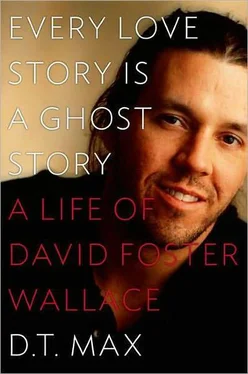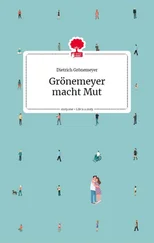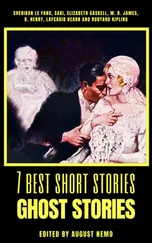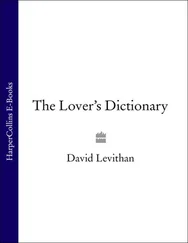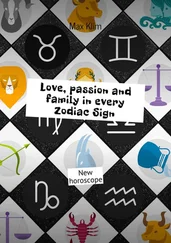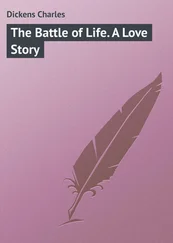The second story, “Self-Harm as a Sort of Offering” (collected later as “Suicide as a Sort of Present”), was a meditation on his difficult relationship with his mother. Wallace was always looking for some sort of catharsis in their connection. In the story — as, he believed, in his own life — a mother’s intense love for and disappointment in her son is the root of his neurosis. The need she holds for him to excel is itself the result of the belief her own parents inculcated in her that she needs to be perfect. The destructive cycle then gets passed to the next generation:
The child appeared in a sense to be the mother’s own reflection in a diminishing and deeply flawed mirror. Thus every time the child was rude, greedy, foul, dense, selfish, cruel, disobedient, lazy, foolish, willful, or childish, the mother’s deepest and most natural inclination was to loathe it. But she could not loathe it. No good mother can loathe her child or judge it or abuse it or wish it harm in any way. The mother knew this. And her standards for herself as a mother were, as one would expect, extremely high…. Hence the mother was at war. Her expectations were in fundamental conflict. It was a conflict in which she felt her very life was at stake: to fail to overcome her instinctive dissatisfaction with her child would result in a terrible, shattering punishment which she knew she herself would administer, inside. She was determined — desperate — to succeed, to satisfy her expectations of herself as a mother, no matter what it cost.
The story ends ambiguously — it is not clear who gives the present of suicide to whom — but in its intense distancing sentences one feels Wallace examining the shards of his childhood again and again, trying to construct a whole without bringing it so close it will hurt him again.
Wallace always wrote in the midst of busyness. There were classes, and even without classes there were recovery meetings, errands for friends and friends of friends, and demands from his dogs. He himself now sponsored many participants in recovery and made it a point to always be available. Charis Conn was amazed to see that whenever Wallace had a few free minutes, he would sit down, cross his legs, and work on a story (one explanation for the shortness of so much of his work during this time). He sent a few of his “1-pagers” to the more innovative magazines with which he had connections, where, despite his reputation, the result was tepid. Most found his efforts obscure. How had a marquee maximalist become a jotter of haikus? Wallace wrote to Steven Moore in late 1996 that he had recently sent out four little stories and they’d all been rejected, a situation that felt familiar and that, combined with his failure to be nominated for the National Book Award for Infinite Jest, led him to believe that his “15 minutes are over and things are back to normal.”
When Wallace was not happy with his fiction, nonfiction grew in appeal. There were always offers. The New York Observer now asked him to review Updike’s Toward the End of Time , a story, like Wallace’s two novels, set in the near future, and he agreed. Wallace’s one-sided conversation with Updike was long-running. Admiration and dislike were always in competition, usually mixed together. Updike was an extraordinary writer, Wallace acknowledged, but there was something too insistent about the way he always declared his genius. The self-conscious beauty and elegance of his prose, Wallace wrote to DeLillo in January 1997, “paw…at the reader’s ear like a sophomore at some poor girl’s bra.” Now faced with the master’s new book, Wallace felt only disdain and a whiff of pity. How, he asked the Observer readers, could so gifted a writer write a book as bad as Toward the End of Time ?
Toward the End of Time concerns an incredibly erudite, articulate, successful, narcissistic and sex-obsessed retired guy who’s keeping a one-year journal in which he explores the apocalyptic prospect of his own death. It is, of the total 25 Updike books I’ve read, far and away the worst, a novel so mind-bendingly clunky and self-indulgent that it’s hard to believe the author let it be published in this kind of shape.
Wallace evinced a particular dislike for the protagonist’s “bizarre adolescent idea that getting to have sex with whomever one wants whenever one wants is a cure for ontological despair,” a line of thought no doubt well known to Wallace.
He received much congratulations when the piece ran in October 1997, and the remark that he attributed to “a friend” in the article, that Updike was “just a thesaurus with a penis,” was widely circulated. Wallace did not like overly personal literary criticism, but he felt within his rights in this case because of his sense that Updike’s flaws had gone beyond the literary to the moral. His characters — well, the author himself — were forgetting that literature was not about showing off; it had to be a service to the inner life of the reader. How then to justify creating characters
who are also always incorrigibly narcissistic, philandering, self-contemptuous, self-pitying and deeply alone, alone the way only a solipsist can be alone. They never belong to any sort of larger unit or community or cause. Though usually family men, they never really love anybody — and, though always heterosexual to the point of satyriasis, they especially don’t love women. The very world around them, as beautifully as they see and describe it, seems to exist for them only insofar as it evokes impressions and associations and emotions inside the self.
After the review ran, Wallace was sorry. He knew that Toward the End of Time was hardly representative of Updike’s best work, his attack seeming after the fact like another brain-fart. “It makes me look like a punk taking easy shots at a big target,” he wrote an admirer who praised the review. “Never again, ami, a book review of a titan.” (On the other hand, he included it in his next essay collection, Consider the Lobster , published in 2005.)
As he was finishing the Updike piece, Premiere asked Wallace to cover the awards ceremony the adult entertainment industry held every year in Las Vegas. Wallace loved the idea — pornography was a subject that never stopped interesting him. It was where the false pleasures and relentless marketing of America met, a metonym for what was toxic in the nation. “My opinions are only that the love you of this country speak of yields none of the pleasure you seek in love,” lectures Marathe in Infinite Jest . The piece was also a way to intellectualize an appetite a less guilt-ridden man might have just enjoyed. Rather than look for the movies locally, Wallace asked Premiere to rent them in New York and send them to his home. There he watched them in preparation and quickly shipped them back.
In January 1998 he went to the convention. He met the “gonzo porn” producer Max Hardcore and Jasmin St. Claire, known in the industry as “the gang-bang queen.” He was able to compare his penis size to those of male porn stars in the men’s room and take in a spectacle tackier than he had ever seen before. What always amazed Wallace about real life was the overload of information. He did not see how anyone could really capture what went on in a single moment. He wrote to a friend in frustration, “Writing about real-life stuff is next to impossible, simply because there’s so much!” He spent a great deal of time in the hallway of the convention, propped against a wall, scribbling in his notebook. (He was as interested in recording his reaction to what he was seeing as in what he was in fact seeing.) At night he would lie awake in his bed looking at himself in the ceiling mirror. 6
Читать дальше
